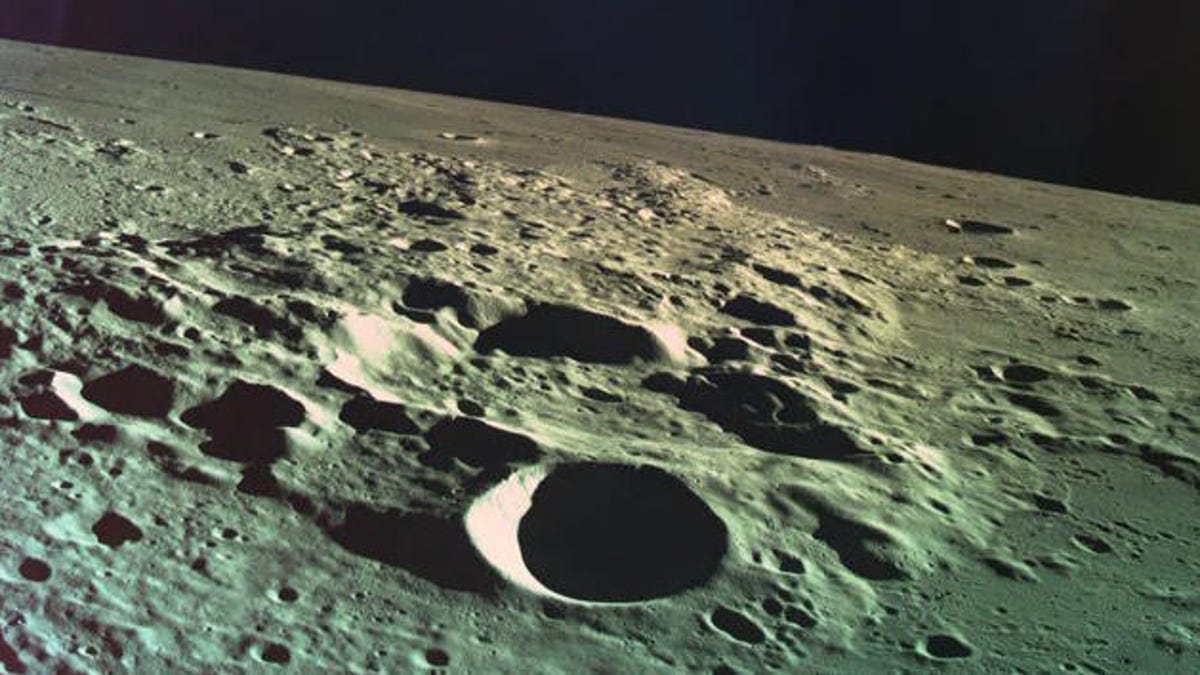Before crashing into the moon, Israel's lunar lander grabbed two final images
The spacecraft captured two wonderful images of the moon's gray, shadowed surface before its untimely end.

The surface of the moon as captured by Beresheet's camera moments before it crashed into the lunar surface.
It was a bittersweet end for SpaceIL's Beresheet probe, the first privately funded lunar lander humans have sent to the moon. During the landing attempt on Thursday, the main engine cut out and communication was lost, ultimately resulting in Beresheet crashing into the moon's surface.
But before its untimely demise, Beresheet was able to turn its camera toward the lunar surface to snap stunning final images of the lunar soil.
Elad Raston, a diplomat at the Israel Foreign Ministry, tweeted that he had received "what appears to be the last image" that the spacecraft sent back to Earth before it failed on April 11, 2019.
Just received from SpaceIL communication team what appears to be the last image #Beresheet spacecraft managed to beam to earth before it crashed on the moons surface pic.twitter.com/yDx2ioZiXy
— Elad Ratson 🇮🇱 (@EladRatson) April 11, 2019
However, as more data filtered out to SpaceIL, the company tweeted a subsequent photo on Wednesday, showing the moon's surface from a distance of just 15 kilometers out. The red and blue tinged surface of our closest cosmic neighbor was the last thing Beresheet was able to nab.
This is the last picture that Beresheet took, at a distance of 15 kilometers from the surface of the Moon.#Beresheet #SpaceIL pic.twitter.com/fGhNkvg5Qd
— Israel To The Moon (@TeamSpaceIL) April 17, 2019
Landing on the face of another space rock is a decidedly difficult process. Although the lander did not achieve its core mission of a soft moon landing, it was still marked with a number of important firsts. Beresheet was the first private spacecraft to insert itself into lunar orbit and made Israel the seventh nation to achieve such a feat.
The robotic explorers we send to new frontiers have a history of providing us with final images of other worlds before going gently (or violently) into the good night. Opportunity, the deceased Mars rover, was also able to snap a breathtaking panorama of the Martian surface, before it succumbed to a dust storm in 2018.
Originally posted April 11.
Update, April 17: Adds final image as described by SpaceIL.

